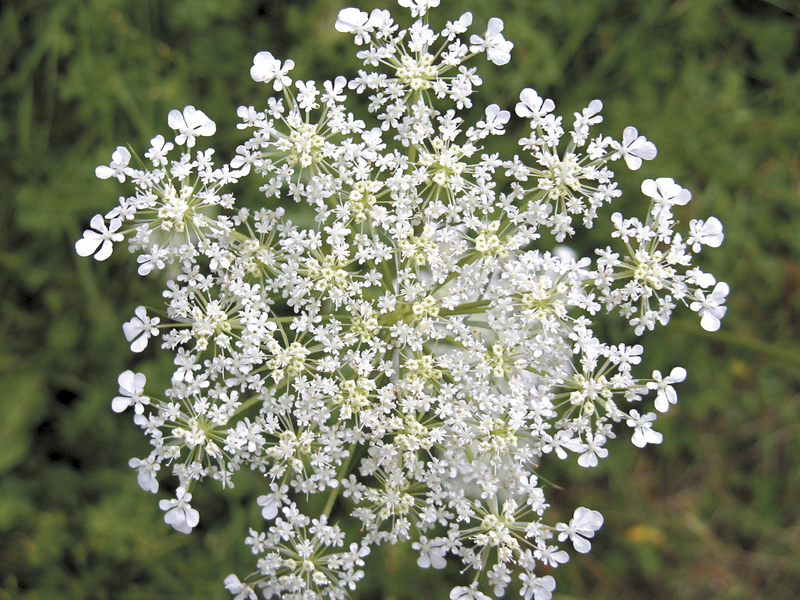Even a queen has to stay busy. Legend has it that Queen Anne, who ruled Great Britain until 1714, was known for her lace work, and the wild carrot flower has a red center to represent a royal blood droplet where the good queen pricked herself with a needle while making lace. Queen Anne’s Lace or wild carrot (Daucus carota) is a native of Europe but has naturalized in North America.
Besides the familiar white Queen Anne’s lace, there are new varieties such as Dara Ammi that blooms in shades of pink, and dark purple, as well as white. This outstanding cut flower has nice-looking three-and-a-half to five-inch lacy umbels on top of firm, upright stems. They often bloom from late spring until middle fall. Each flower cluster or umbel is made up of hundreds of individual tiny flowers. The umbels start out curled up, and then slowly open to allow pollination. After pollination, the cluster rolls itself shut again when it goes to seed at the end of the growing season. These plants pump out lots of blooms, often up to 15 flowering stems on each. The delicate flowers are long lasting in bouquets. Seeds are available from local nurseries or mail order from companies such as Johnny’s Seeds (www.johnnyseeds.com).
For a bold green contrast, try the wild carrot Graceland which boasts more uniform seed germination and a steady supply of large, light-green flowers. Graceland grows from 40 to 56 inches tall.
Wild carrot is what is known as a beneficial weed. Wild carrots are excellent companion plants that attract pollinating insects. Wild carrots are said to increase tomato production when planted nearby. Plant wild carrot among your lettuce so the tall plants can create a micro-climate with cooler, moister air for the lettuce. Wild carrot roots are thin, long, pale, and woody, but can be cooked into stews, soups, and even made into tea. Young leaves can be chopped and added to green salads. Dip the flower clusters in batter and fry them. Even the aromatic seeds can be used to impart a woodsy wild flavor to meat dishes.
Plant your Queen Anne’s lace seeds after the soil has warmed up in the spring. They resent transplanting and so do best sown directly into the garden. Cover the seeds lightly and water, but do not let the ground get soggy. Take care when planting because the seeds are tiny with about 24,100 seeds per ounce. Make two to three successive sowings every two weeks for an continuous crop of blooms. They are not fussy and do well in a wide variety of soil, even tolerating very dry conditions.
These plants will often self seed once established. You can expect your first blooms in just 100 days.
Wait to cut Queen Anne’s lace until about 80 percent of the tiny flowers in each umbel are open and there is no shedding pollen. If you cut the flowers too soon they will not be able to take up water and will wilt.
Because of their tall size and loose umbels of flowers Queen Anne’s lace makes a good addition to a flower border, wildflower plantings and woodland borders.
As for Queen Anne? She never had heirs in spite of 17 pregnancies. One wonders when she would have had the time to sew lace?


















































